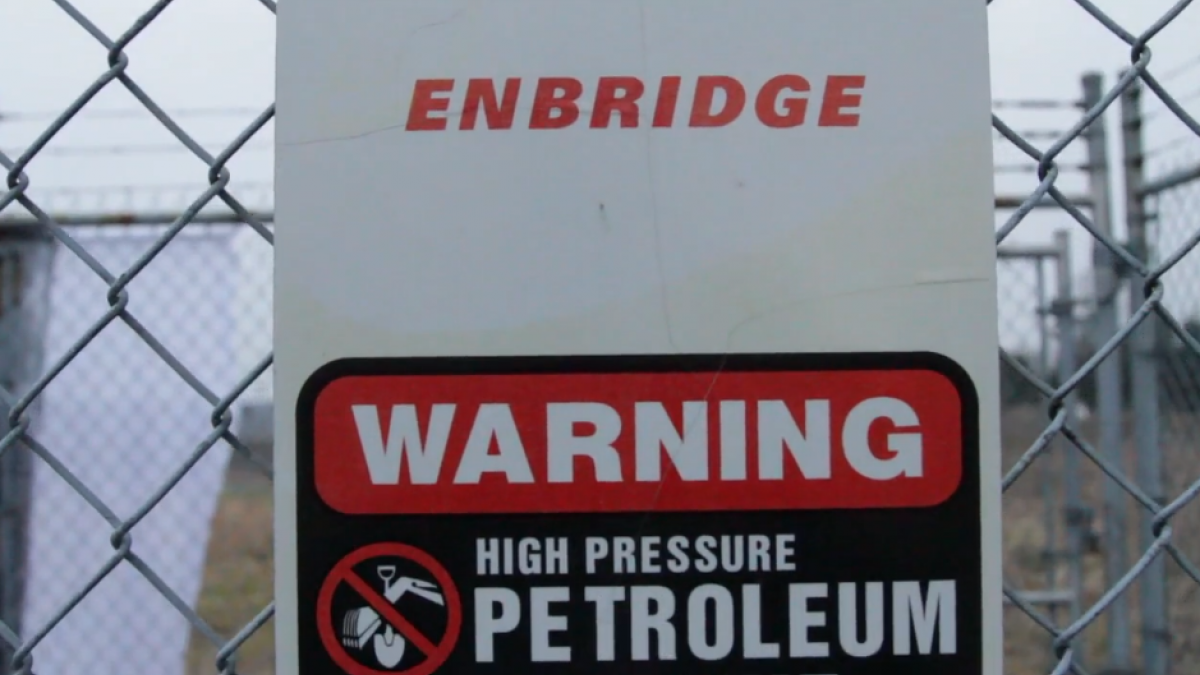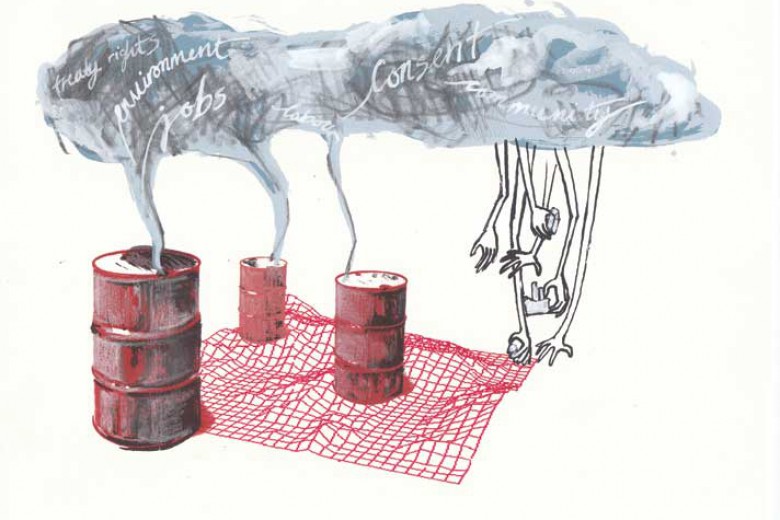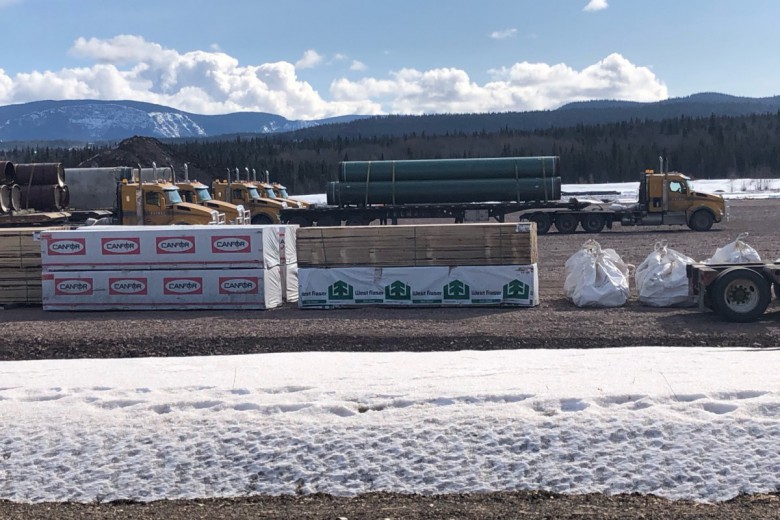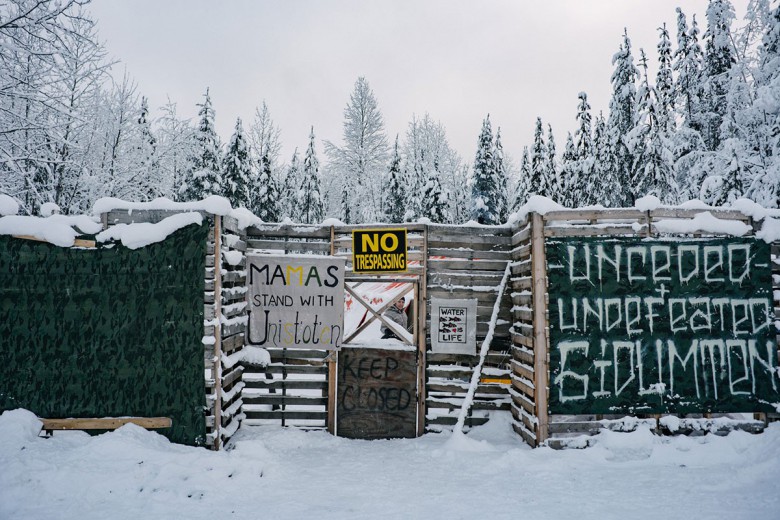Under the cover of darkness between January 24 and 25, protesters tampered with the valves of two Enbridge pipelines, Line 9 and Line 7, near Hamilton, Ontario, an Enbridge spokesperson has confirmed to Briarpatch. This was the fourth instance in less than two months that protesters have disrupted pipelines’ flow in the Sarnia – Montreal corridor.
An account of events, titled, “enbridge site sabotaged – again,” was posted early in the morning to the Toronto Media Co-op website.
“our hearts were bursting with love and cheer after hearing of the many times our friends have courageously shut down pipelines in recent months,” it reads.
“so in the early hours of january 25, 2016 we found our own courage and took action against enbridge and their line 9. slipping in to a valve station located on traditional Haudenosaunee Territory (in hamilton, ontario) we successfully operated an electronic valve to shut off the flow of tarsands crude in line 9. a line 7 valve, also an enbridge tarsands pipeline, was also tampered with and closed part way. we then disappeared back into the night.”
Enbridge has confirmed to Briarpatch that both pipelines were tampered with. Company spokesperson Graham White says:
“Control Centre Operations detected a valve closure along Line 9 just north of Hamilton at approximately 11:15 p.m. MST last night. The control centre did not receive any calls in advance. The line was briefly shut down while maintenance workers were dispatched to visually inspect the valve station to confirm that tampering had occurred. We contacted authorities and safely restarted the line at approximately 3:30 a.m. MST. Line 7 at the same location showed signs of tampering, but the valve was not shut so flow was not interrupted. There are no impacts to client deliveries in either case.”
Line 9 is a 40-year-old pipeline that, as of December 3, has been transporting western crude oils, including tar sands bitumen and lighter Bakken crude, to eastern refineries and ports. Line 7 is an older and smaller pipeline that, for a short distance, runs parallel to Line 9 in southwestern Ontario, from Sarnia to Westover.
One of the 18 First Nations communities through which Line 9 flows is the Chippewa of the Thames. The First Nation has launched a challenge through the Supreme Court of Canada claiming that they did not give consent to the project and were not adequately consulted.
The activist’s text posted to the Toronto Media Co-op does not mention the court case, but alludes to broader struggles.
“[W]e took this action to stand in unity with all those who have defended the land before us,” reads the account, “and for those who decide to take action after us. [W]e take it to fight against an industry that puts us at risk every day and subjects frontline communities to violence upon their bodies, communities and cultures – for profit.”
The text is similar to one titled “The Cat is Out of the Bag: Shutting Down Pipelines Is Way Easier Than Anyone Thought” [editor’s note: Briarpatch published a version of this account on December 23, 2015], written by an activist involved in the first pipeline shut-down of this kind, on December 7th, and follows the same logic as this follow-up interview.
The activist author recounting last night’s events also includes a “how-to” post-script:
“ps. for those curious to follow in our stead – [E]nbridge thinks they’re being all smart by putting on large gold security chains (which can’t be cut with bolt cutters) and lockboxes on the gates. bypass these by cutting the fence itself. then all you need are some garden shears (to cut the very, very secure zip tie protecting the electrical panel), your wits and an exit plan.”
Last night’s actions targeting Line 9 and Line 7 were done anonymously, as was the shut-down of Line 7 on January 4th. No photos of either action have yet surfaced, nor have the names of those involved.
The anonymity of these recent direct actions stands in contrast to the two highly public actions in December targeting Line 9. In those cases, on December 7 near the Ontario – Quebec border and December 21 near Sarnia, Ontario, photo and video journalists were on the scene, and the protesters stayed locked to parts of the pipeline valves until they were arrested.
Tomorrow, January 26, three of the protesters arrested on December 21 go to court in Sarnia. They will be charged with several offences, including mischief endangering life, which carries a maximum sentence of life in prison.
Although Line 9 is running below capacity in its first year of operation (as a safety precaution), manually closing a valve is not a no-risk manoeuvre. The build-up of pressure can cause problems that include, in worst cases, a spill. However, engineers do tests to make sure pipelines can handle valve closures, as it is not an altogether uncommon occurrence. In the December 21 action, the activists called Enbridge in advance to give notice the valve would be shut down.






